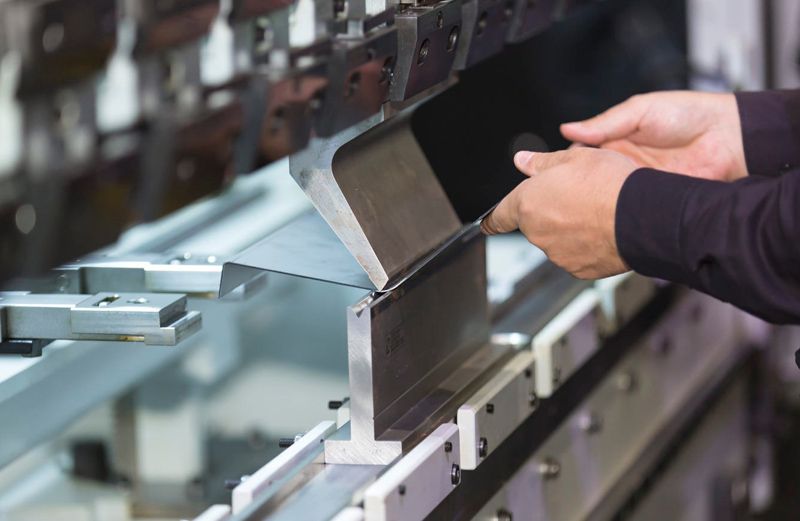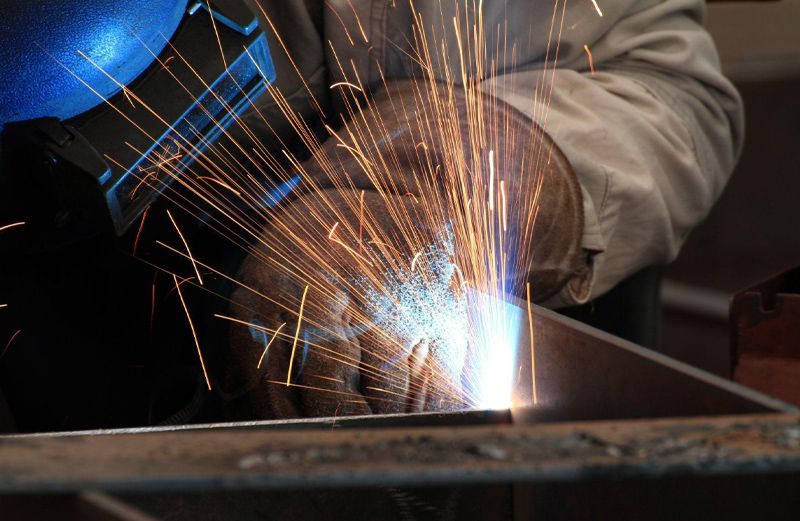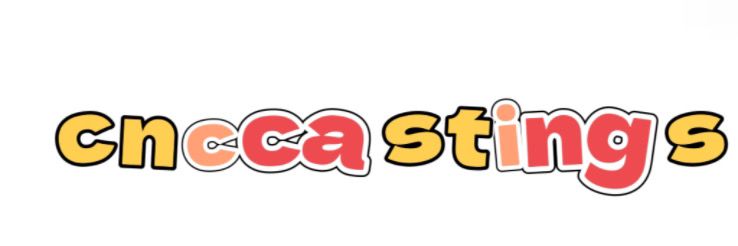The most complete summary of sheet metal processing knowledge
Apr. 25, 2025
Sheet metal fabrication
Sheet metal processing is the pivotal technology that sheet metal technicians need to grasp, and it is also an important process for the forming of sheet metal products. Sheet metal processing includes traditional cutting and cutting, blanking processing, bending forming and other methods and process parameters, as well as various cold stamping die structures and process parameters, various equipment working principles and operation methods, as well as new stamping technology and new processes. The processing of metal sheets of parts is called sheet metal processing.
Sheet metal processing is called sheet metal processing. For example, the use of plates to make chimneys, iron drums, oil tanks, ventilation pipes, elbow heads, round places, funnel shapes, etc., the main processes are shearing, bending buckles, bending forming, welding, riveting, etc., which require certain geometric knowledge. Sheet metal parts are sheet metal parts, that is, parts that can be processed by stamping, bending, stretching and other means, and a general definition is a part with constant thickness during the processing process. The corresponding parts are castings, forgings, machined parts, etc.
Material selection
The materials generally used in sheet metal processing are cold-rolled plate (SPCC), hot-rolled plate (SHCC), galvanized sheet (SECC, SGCC), copper (CU) brass, copper, beryllium copper, aluminum plate (6061, 5052, 1010, 1060, 6063, duralumin, etc.), aluminum profile, stainless steel (mirror, brushed surface, matte surface), according to the different functions of the product, the selection of materials is different, generally from the use and cost of the product to consider.
(1) Cold-rolled plate SPCC, mainly electroplating and paint parts, low cost, easy to form, material thickness ≤ 3.2mm.
(2) Hot-rolled plate SHCC, material T≥3.0mm, also electroplating, paint parts, low cost, but difficult to form, mainly flat parts.
(3) Galvanized sheet SECC, SGCC. SECC electrolytic board is divided into N material and P material, N material is mainly not used for surface treatment, and the cost is high, and P material is used for spraying parts.
(4) Copper; Mainly use conductive materials, and its surface treatment is nickel plating, chrome plating, or no treatment, and the cost is high.
(5) Aluminum plate; Generally, surface chromate (J11-A), oxidation (conductive oxidation, chemical oxidation), high cost, silver plating, nickel plating.
(6) Aluminum profile; Materials and parts with complex cross-sectional structure are widely used in various subracks. The surface treatment is the same as that of aluminum plate.
(7) Stainless steel; It is mainly used without any surface treatment, and the cost is high.
Commonly used materials
Galvanized steel sheet SECC
The substrate of SECC is a general cold-rolled steel coil, which becomes an electrogalvanized product after degreasing, pickling, electroplating and various post-treatment processes in the continuous electrogalvanizing production line. SECC not only has the mechanical properties and similar processability of general cold-rolled steel sheets, but also has superior corrosion resistance and decorative appearance. It has great competition and substitution in the market of electronic products, home appliances and furniture. For example, SECC is commonly used in computer cases.
Ordinary cold-rolled sheet SPCC
SPCC refers to the continuous rolling of steel ingots through a cold rolling mill into steel plate coils or sheets of the required thickness. The surface of SPCC does not have any protection, and it is easy to be oxidized when exposed to air, especially in a humid environment, the oxidation rate is accelerated, and dark red rust appears.
Hot-dip galvanized steel sheet SGCC
Hot-dip galvanized steel coil refers to the semi-finished products after hot-rolled pickling or cold rolling, which are cleaned, annealed, and immersed in a molten zinc tank with a temperature of about 460 °C, and the steel sheet is coated with a zinc layer, and then quenched and tempered and leveled and chemically treated. SGCC material is harder than SECC material, has poor ductility (avoid deep pumping design), has a thicker zinc layer, and has poor weldability.
Stainless steel SUS304
One of the most widely used stainless steels, it is more corrosion-resistant, heat-resistant, and has very good mechanical properties than steels containing Cr (chromium) because of its Ni (nickel) content, no heat treatment hardening, and no elasticity.
Stainless steel SUS301
The content of Cr (chromium) is lower than that of SUS304, and the corrosion resistance is poor, but it can obtain good tensile force and hardness in stamping after cold working, and has good elasticity, and is mostly used for shrapnel springs and anti-EMI.

Surface review
To write the process flow of parts, we must first know the various technical requirements of the parts drawing; Drawing review is the most important part of part process compilation.
(1) Check whether the drawing is complete.
(2) The relationship between the surface and the view, whether the annotation is clear and complete, and the dimension unit is marked.
(3) Assembly relationship, assembly requirements key dimensions.
(4) The difference between the old and new layouts.
(5) Translation of foreign language pictures.
(6) Conversion of the code at the table.
(7) Feedback and burial of drawing problems.
(8) Materials.
(9) Quality requirements and process requirements.
(10) The official issuance drawing must be stamped with the quality control seal.
Precautions
The unfolded drawing is a floor plan (2D) that is developed according to the part drawing (3D).
(1) The unfolding method should be compatible, and it should be convenient to save materials and processability.
(2) Reasonable selection of clearance and hemming methods, T = 2.0 below the gap 0.2, T = 2-3 gap 0.5, the edge of the long side of the short side (door panels).
(3) Reasonable consideration of tolerance dimensions: the negative difference goes to the end, and the positive difference goes half; Hole size: the positive difference goes to the end, and the negative difference goes halfway.
(4) Burr direction.
(5) Draw a cross-sectional view of tooth drawing, riveting, tearing, punching bump (package), etc.
(6) Check the material, plate thickness, and plate thickness tolerance.
(7) For special angles, the inner radius of the bending angle (generally R=0.5) should be tested and expanded.
(8) Where there is easy to make mistakes (similar and asymmetrical), it should be highlighted.
(9) Where there are more sizes, add a larger picture.
(10) The place that needs to be sprayed and protected must be indicated.
Machining process
According to the difference in the structure of sheet metal parts, the process flow can be different, but the total does not exceed the following points.
1. Blanking: There are various ways of blanking, mainly the following ways.
(1) Shearing machine: It is a simple material that uses a shearing machine to cut strips, which is mainly for the preparation of mold blanking and forming, with low cost and accuracy of less than 0.2, but it can only process strips or blocks without holes and chamfers.
(2) punch: it is the use of punch in one or more steps on the plate after the parts are unfolded after the flat parts are punched into various shapes of materials and parts, its advantages are that the working hours are short, the efficiency is high, the precision is high, the cost is low, suitable for mass production, but to design the mold.
(3) NC numerical control blanking, NC blanking should first write numerical control plus engineering formula, utilize programming software, the unfolding diagram drawn is compiled into the program that NC digital drawing machining machine tool can identify, let it punch each structure shape flat plate piece on the flat plate step by step according to these programs, but its structure is affected by the tool structure, the cost is low, and the accuracy is 0.15.
(4) Laser blanking, is the use of laser cutting, on the large plate of the structure of the shape of the plate cut out, and NC blanking the same need to write the laser program, it can be a variety of complex shape of the plate, high cost, accuracy of 0.1.
(5) Sawing machine: mainly used under aluminum profiles, square pipes, drawing tubes, round bars, etc., low cost, low precision.
2. Fitter: counterbore, tapping, reaming, drilling.
The counterbore angle is generally 120°C, which is used for rivets, and 90°C is used for countersunk screws, tapping inch bottom holes.
3. Flanging: also known as hole drawing, flanging, is to draw a slightly larger hole on a smaller base hole, and then tapping, mainly with sheet metal processing with a relatively thin plate thickness, increase its strength and the number of thread turns, to avoid slippage, generally used for the plate thickness is relatively thin, the hole circumference is normal shallow flanging, the thickness is basically unchanged, when the thickness of the thickness is allowed to thin 30-40%, you can get a height of 40-60% higher than the normal flanging height, with 50% of the thinning, The maximum flanging height can be obtained, and when the plate thickness is large, such as 2.0, 2.5 and other plate thicknesses, it can be directly tapped.
4. Punch: It is the processing process of mold forming, the general punch processing has punching, chamfering, blanking, punching convex hull (bump), punching tearing, punching, forming, etc., and its processing needs to have a corresponding mold to complete the operation, such as punching blanking die, convex cladding die, tearing die, punching die, forming die, etc., the operation mainly pays attention to the position and directionality.
5. Riveting: Riveting as far as the company is concerned, there are mainly riveting nuts, screws, loose and so on, which are completed by hydraulic riveting machine or punch, riveting to sheet metal parts, as well as riveting methods, need to pay attention to directionality.
6. Bending: Bending is to fold 2D flat parts into 3D parts. Its processing needs to be completed by a bending machine and a corresponding bending die, and it also has a certain bending sequence, and its principle is to fold the next knife without interference, and then bend with interference.
The number of bending strips is less than 6 times the plate thickness below T=3.0mm, such as: T=1.0, V=6.0, F=1.8, T=1.2, V=8, F=2.2, T=1.5, V=10, F=2.7, T=2.0, V=12, F=4.0.
Classification of folding machine molds, straight knives, scimitars (80°C, 30°C).
When the aluminum plate is bent, if there is a crack, the width of the lower die groove can be increased to increase the upper die R (annealing can avoid cracks).
Precautions when bending: I. Drawing, the thickness and quantity of the plate are required; II. Bending direction; III. Bending angle; IV. Bending Dimensions; VI. Appearance and electrochrome plating materials are not allowed to have creases. The relationship between bending and riveting process, under normal circumstances, riveting first and then bending, but there are materials and parts that will interfere after riveting, and some need to bend - riveting - then bending and other processes.

7. Welding: Welding definition: the distance between the atoms and molecules of the welded material and the Jingda lattice form a whole.
(1) Classification: a fusion welding: argon arc welding, CO2 welding, gas welding, manual welding. b Pressure welding: spot welding, butt welding, impact welding. c Brazing: electrochrome welding, copper wire.
(2) Welding method: a CO2 gas shielded welding. b TIG welding. c spot welding, etc. d Robotic welding.
The selection of welding method is based on the actual requirements and materials, generally speaking, CO2 gas shielded welding is used for iron plate welding; TIG welding is used for stainless steel, aluminum plate welding, robot welding, which can save man-hours, improve work efficiency and welding quality, and reduce work intensity.
(3) Welding symbols: Δ fillet welding, D, I welding, V-welding, unilateral V-welding(V), V-welding with blunt edge(V), spot welding (O), plug welding or slot welding(∏), crimping welding (χ), unilateral V-welding with blunt edge (V), U-welding with bluntness, J-welding with bluntness, bottom welding, and feng welding.
(4) Arrow lines and joints.
(5) Welding defects and their prevention measures.
Spot welding: If the strength is not enough, the bump can be made and the welding area can be imposed
CO2 welding: high productivity, low energy consumption, low cost, strong rust resistance
Argon arc welding: shallow solution depth, slow fusion speed, low efficiency, high production cost, tungsten inclusion defects, but has the advantages of good welding quality, can weld non-ferrous metals, such as aluminum, copper, magnesium, etc.
(6) Causes of welding deformation: insufficient preparation before welding, and fixtures need to be added. Welding fixture defects to improve the process. The welding sequence is not good.
(7) Welding deformation correction method: flame effect correction method. Vibration method. Hammering. Artificial Statute of Limitations.
Other applications
The processing steps of the processed parts in the sheet metal workshop are: product pre-test, product processing trial production and product mass production. In the process of product processing and trial production, it is necessary to communicate with customers in a timely manner, and obtain the evaluation of the corresponding processing, and then carry out mass production of products.
Laser perforation technology is the earliest laser technology to realize practical application in laser material processing technology. Laser drilling in the sheet metal workshop generally uses pulsed laser, with high energy density and short time, which can process 1μm holes, especially suitable for processing small holes with a certain angle and thin materials, and also suitable for processing deep holes and micro holes on parts with high strength and hardness or brittle and soft materials.
The laser can realize the perforation of the burner parts of the gas turbine, and the perforation effect can achieve a three-dimensional direction, and the number can reach thousands. PERFORATED MATERIALS INCLUDE STAINLESS STEEL, NICKEL-CHROME FERROALLOY AND HASTELLOY-BASED ALLOYS. Laser perforation technology is not affected by the mechanical properties of the material, and it is relatively easy to achieve automation.
Under the development of laser punching technology, the laser cutting machine has realized the automatic operation, and the application in the sheet metal industry has changed the processing method of traditional sheet metal technology, realized unmanned operation, greatly improved production efficiency, and realized the whole automatic operation, which has driven the development of sheet metal economy, and improved a grade in the punching effect, and the processing effect is remarkable.
9
0
0

Comments
All Comments (0)